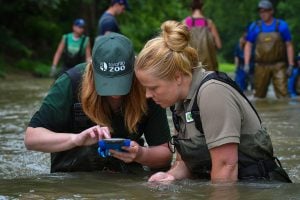Has Washington State University discovered a real-life Yogi Bear?
In a study, bears are being tested to see if they can use “tools.”
In an experiment designed by student Alex Waroff, bears were enticed with a glazed doughnut dangling just out of their reach. Researchers placed a tree stump under the treat to see if the bears would use the stump. Once the bears did, the stump was removed from under the treat and placed on its side to see if the bears would move the stump back and use it to reach the treat.
So far, a nine-year-old female grizzly named Kio has stolen the spotlight, breezing through the tasks.
“It doesn’t really surprise me,” says Andrew Derocher, a bear expert and professor of biological sciences at the University of Alberta. “Bears are very good at manipulating objects. They can use their paws to some extent like hands. They’re very dexterous.”
CBC reported that O. Lynne Nelson, an assistant director and professor of cardiology at WSU’s Veterinary Teaching Hospital who is assisting with the study, said that this research helps people understand the evolution of problem solving in bears and how that compares to other species, such as humans. “It helps us to understand the way bears think and perhaps how we might anticipate and alter our practices in backcountry places and campgrounds.”
She told CBC that the study is helpful to professionals and zookeepers working with bears “to address bear-related problems” and “to keep their captive wards mentally and physically stimulated.”
The Committee on the Status of Endangered Wildlife in Canada lists grizzly bears as a special concern species because of their sensitivity to human activities and natural events.
Parks Canada notes “habitat fragmentation and loss caused by an increasing human population” as one of the grizzly bear’s primary threats, along with “accidental human-caused mortality.”
“It doesn’t matter if we’re talking about hunting of bears or habitat preservation — wildlife management is 95 per cent of human management,” Derocher says. “Where the study might be particularly useful is dealing with problem animals that somehow come into contact with humans.”
Until then, campers should be careful and continue to keep food well away from any potential Yogis.
“Grizzlies have radiated out of such diverse settings. This is a species that has such a huge, huge range on the planet,” Derocher says. “Typically, a species that exploits the diversity of habitats and ranges has to be pretty adaptable.”





